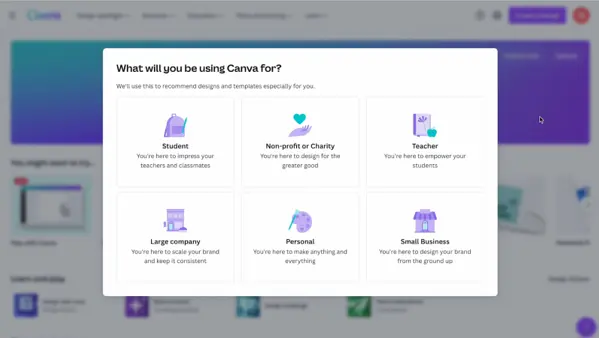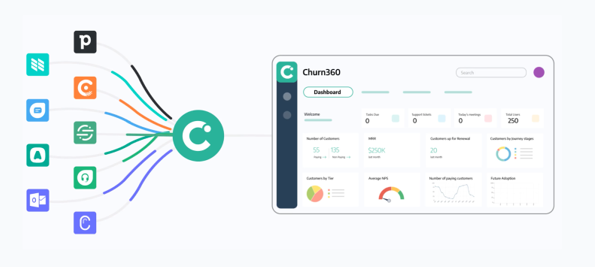Introduction
Let’s say your SaaS is an online waste disposal platform that connects waste disposal companies with people. When a customer subscribes to your service, Improve Time-To-Value is how long it takes for the customer to see that indeed your service is helping their everyday life.
We’ll be looking at some customer success techniques to improve Time-to-Value in this guide.
What is Time-to-Value (TTV)
Time-to-Value (TTV) measures the duration it takes for a new customer to experience the value provided by a SaaS product or service. That time span between their purchase and the moment they realize how the product benefits them. While many metrics are important for businesses, Time-to-Value often goes unnoticed, despite its potential impact on customer retention.
Why TTV Matters for Customer Success
As Wes Bush, CEO of Product Led said in the ProductLed’s Youtube video; “Great User Onboarding is built when you clearly define why users sign up for your product in the first place.”
Life in a way is about investments, as a business you invest in high-value products so you can have a high ROI by attracting and retaining customers. Same with the customers, they invest in your products and expect an ROI by getting value from them fast.
- Short TTV – customers get faster ROIs
- Long TTV – customers fret and begin to look for other solutions.
TTV vs. “Aha” moment
Time-to-Value (TTV) and the “Aha” moment are interconnected concepts that play a vital role in customer success. TTV measures the time it takes for customers to perceive the value of a product or service, while the “Aha” moment marks the point when users fully comprehend the value of your offering.
The “Aha” moment is often the result of a successful onboarding process that effectively guides users towards experiencing the product’s core value, leading to increased engagement and reduced churn.
What Does “Value” Refer To?
Cambridge Dictionary defines “Value” as; the importance or worth of something for someone. Value in this context refers to the benefits a customer gets from a SaaS product.
For example, your product handles Tax and accounting for customers, the value is the efficiency of managing their finances.
For businesses in the competitive SaaS market, delivering value quickly is essential to build trust and retain customers.
How to measure Time to Value (TTV)
Your business needs a strong reputation to stand well in the SaaS market, having a long TTV is not a way to build one. Measuring your TTV gives your customer success team insights they can use to improve customer onboarding flow and yield better results.
Here are three ways to measure your TTV:
Measure the time to upgrade from free to paid
One of the crucial indicators of TTV is the time it takes for customers to transition from a free trial to a paid subscription. A shorter duration between these stages signifies a swift onboarding process and an early realization of value. Track the time it takes to achieve this.
Measure customer onboarding time
Wes Brown in the video also mentioned: “The job of user onboarding is to lift any obstacles in your user’s way- give a fast track to achieve the goal before they lose interest and churn out.”
To have an understanding of your onboarding flow, measure the time customers spend on the onboarding process.
Time of adoption for new features
One of the philosophies shared by Adam Jarczyn, ex Global Head, Technology Programs at Shopify, on reducing TTV is: “Obvious to you, isn’t obvious to Customers.”
The new features rolled out by your Product team might be easy to adopt in-house because they developed them. However, it’s not the same for your customers.
Ensure you monitor the timeframe it takes for users to adopt new features.
Understanding the Customer Journey
To reduce Time-to-Value, it’s essential to understand the customer journey. This involves:
Identifying the Steps Involved in Onboarding and Value Creation:
Break down the onboarding process into specific steps that lead users to experience the product’s value. There’s an exercise by the Product Led team where they categorize the onboarding flow into Red, Yellow, and Green steps to improve TTV.
Assessing the Complexity of Your Product:
Understand the complexity of your product from a user’s perspective and streamline the onboarding flow accordingly.
Creating an Onboarding Flow to Maximize the User Experience:
Design a seamless and user-friendly onboarding Checklist that guides customers towards achieving their goals with the product.
Optimizing the Onboarding Process for Quicker TTV
At this point, you understand why a shorter TTV is important for Customer success. Let’s look at how we can optimize the onboarding process and remove all roadblocks that delay the “Aha” moment.
- Enhancing User Onboarding with Product Tours, Key Features, and Active Users
If you’ve been to a museum, you know how those tours help with the experience. The same thing applies to your SaaS business, use product tours to guide customers through the onboarding process.
Here’s an example of a Product tour by Canva:

Leveraging Automation to Reduce Time Spent on Manual Processes
Manual Process: A new customer signs up, the team sends a welcome email and prepares a guide for the product walkthrough.
Automated Process: The same process above, but automated with the right tool. Using customer success automation software simplifies the onboarding process, reducing the TTV
- Monitoring & Improving Customers’ Performance Along Their Journey
To monitor your customers’ performance, you can track their most used features and potential challenges with a tool like Churn360 customer journey analytics software. With this data, you can refine the onboarding process, and ensure your customers get value from your product faster.
Evaluating Your Results and Refining Tactics
Peter Drucker wisely said: “What gets measured gets managed.”
This quote holds profound meaning when it comes to improving Time-to-Value (TTV). After all the effort and implementation of various strategies, the next step is to evaluate the outcomes and refine your tactics for continuous improvement.
So, what actions do you need to take to ensure you are on the right track?
Measuring Relevant Metrics and Retention Rates:
If X number of customers sign up for your product and Y remain after a certain time, you need to know why. What made them stay? Why did some leave? These are some of the metrics you need to keep track of.
Analyzing Churn and Low Retention Rates:
During Adam Jarczyn’s time at Shopify, discovered that Data migration was hindering the user onboarding flow. As a result, they made the decision to remove it from the process to prevent customers from getting stuck in the onboarding funnel, there by reducing churn.
Spot roadblocks in your onboarding flow and either fix or remove them.
- Identifying Areas of Opportunity Through Customer Feedback Surveys:
As Wes Bush said: “When users are signing up for your product try to understand where they are emotionally and meet them there.”
He also suggested some questions to ask your customers:
- How is my Customer feeling right now?
- How do I help overcome the friction of how they are feeling?
- Gather feedback from customers to identify areas for improvement.
Different types of TTV
Time-to-Value is not a one-size-fits-all concept, as it highly depends on the nature of your product or service.
Here are five common TTV types:
Time to Basic Value:
This refers to the duration it takes for customers to achieve the core benefits and functionalities of the product or service. For most Freemium models, it could be a 7-day free trial.
Time to Exceed Value:
It’s the period it takes to prove to customers that your product or service offers more ROI than their first investment. Say your SaaS helps with building a Sales funnel, if it boosts their lead conversion rates faster, it demonstrates an impressive time to exceed value.
Experience the full potential of Churn360 through a personalized demo session with our expert team
Book a demo
Immediate Time to Value:
This is the speed at which customers experience the core benefits of your product or service. For instance, if you offer a task management app, and your customers get an organized workflow within minutes, it shows immediate time to value.
Short Time to Value:
Customers quickly realize the benefits of the product with minimal onboarding. An example is a language learning app that allows users to have their first conversation in a short time.
Long Time to Value:
This type involves a longer onboarding process before customers fully experience the product’s benefits. For example, a sophisticated project management platform tailored for large enterprises may require several weeks of user training and data migration before they can use it.
Churn360 Makes Shortening Your Customer’s Time to Value a Reality

Hopefully, more light has been shed on how to reduce your Time-to-Value (TTV) and improve your onboarding flow, leading to greater customer success. The next step is to take action.
Churn360 is the ultimate solution to shorten your customer’s Time-to-Value journey. With personalized onboarding, seamless automation, and continuous improvement, Churn360 empowers your team to excel in customer success.
Conclusion
Improving Time-to-Value is the key to unlocking unparalleled customer success and fostering long-lasting relationships.
By focusing on personalized onboarding, seamless automation, and continuous improvement, businesses can significantly shorten the time it takes for customers to experience the true value of their products or services.


